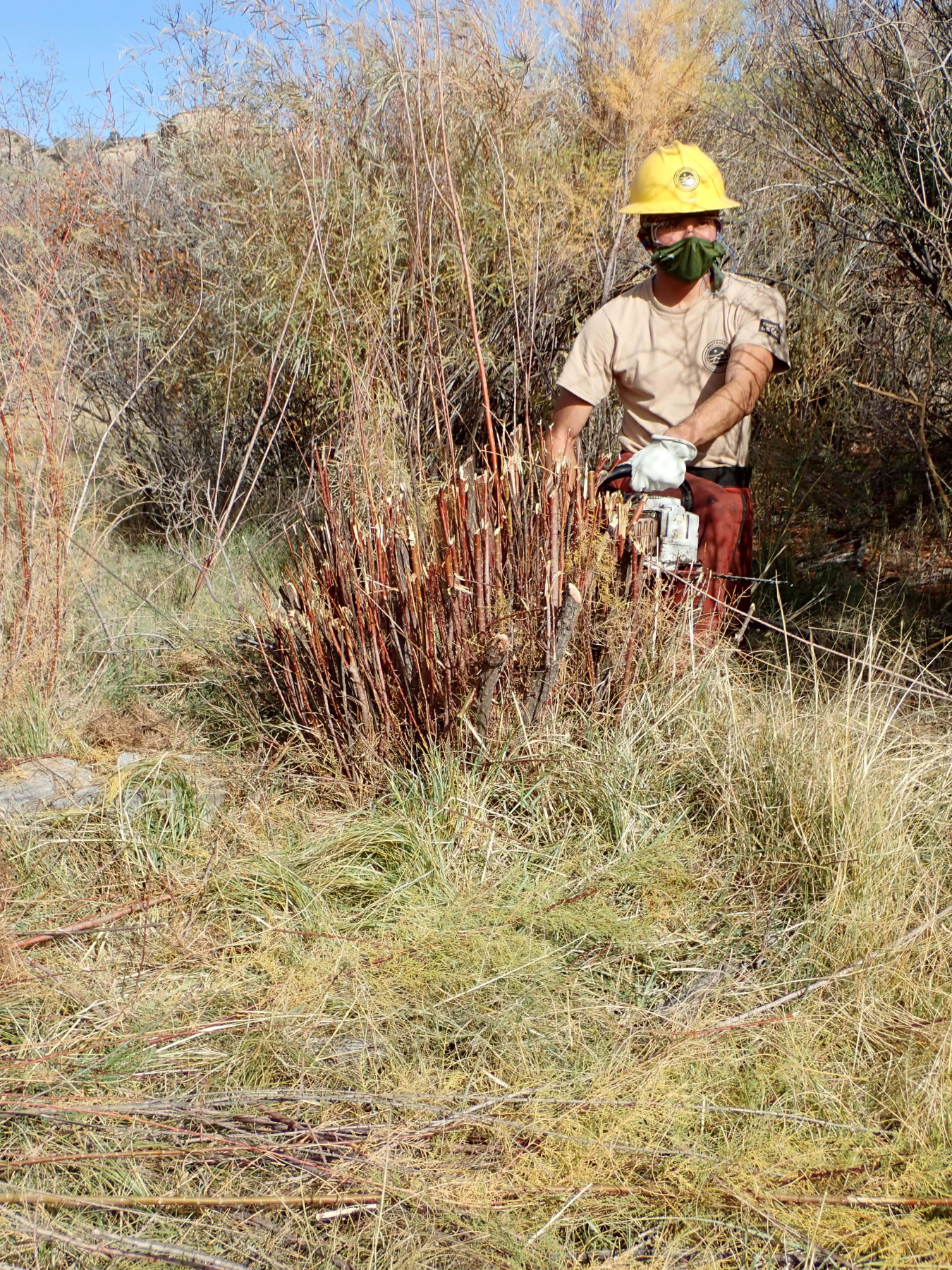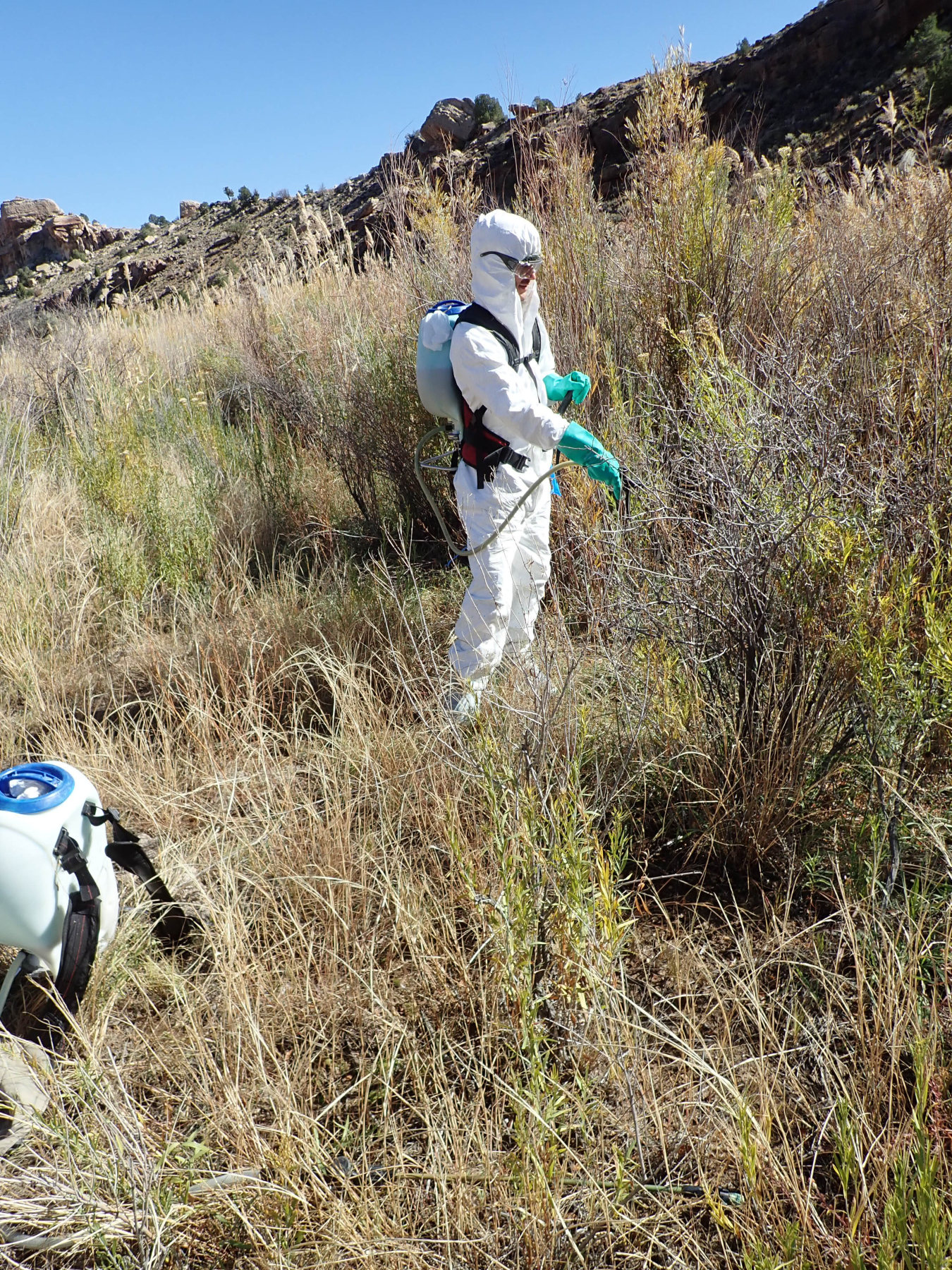Every year, DOE LM, in partnership with the Dolores River Restoration Project and the Southwest Conservation Corps, treats a 4-mile stretch along the Dolores River in southwest Colorado for noxious weeds.
December 15, 2021
Wearing protective gear, members of Southwest Conservation Corps and Dolores River Restoration Project work to remove invasive plants from the banks of the Dolores River in Slick Rock, Colorado.
Since 2011, the U.S. Department of Energy (DOE) Office of Legacy Management (LM) has collaborated with the Dolores River Restoration Partnership (DRRP) and the Southwest Conservation Corps (SCC) to treat a 4-mile stretch of the Dolores River for noxious weeds. The river stretch runs through LM-managed uranium-lease tracts along the river in southwest Colorado.
DRRP is a coalition of public and private organizations, including federal land-management agencies, local governments, landowners, and other interested parties. The SCC operates conservation service programs across Southern Colorado and Northern New Mexico that engage youth, young adults and veterans on public lands.

LM works within the partnership to accomplish vegetation management and restoration activities, and to monitor and measure results against the partnership goals. Other partners upstream and downstream are also working to control invasive species, restore riparian habitat, and promote habitat for wildlife.
DRRP and SCC crews usually spend a week or two every year at the lease tracts, applying herbicide and manually removing invasive species, such as Russian knapweed, Canadian thistle, and tamarisk. LM collaborates with the crews to reduce the non-native vegetation that springs from the arid landscape, while improving and restoring the native plant life and creating a healthier ecosystem.
This October, DRRP and SCC removed Russian knapweed from two of the lease tracts that straddle the Dolores River near Slick Rock, Colorado. Armed with backpacks and UTV-mounted tank sprayers, the team successfully sprayed and uprooted the noxious weeds plaguing the SR-13 and SR-14 lease tracts.
SCC Program Watershed Manager Nate Peters expressed enthusiasm for the partnership and the eradication of the invasive species.
“These weeds are a huge problem to the native species along the riverside and will destroy the native wildlife’s food source if we don’t treat them. I’m super excited to be a part of this project and the opportunity to collaborate with DRRP and other crucial agencies,” he said.
The SCC empowers young people with opportunities to serve their communities through natural-resource stewardship projects. These structured educational and challenging service opportunities promote growth, respect, and social skills.
“While this partnership is about restoring the habitat along the Dolores River, it is also a crucial and educational experience that we are able to give to SCC,” said Legacy Management Strategic Partner Environmental Sciences Specialist Marilyn Kastens. “It’s a very rewarding program.”
Kasten has been working with SCC since LM’s DRRP partnership began in 2011. She has supported LM in its mission, as the partners work to manage the vegetation of the area and monitor the results.
“It’s been great to see that LM’s DRRP, with help from SCC, maintained the natural habitat of the corridor,” she added. “I’m very honored to work with some really amazing people.”

